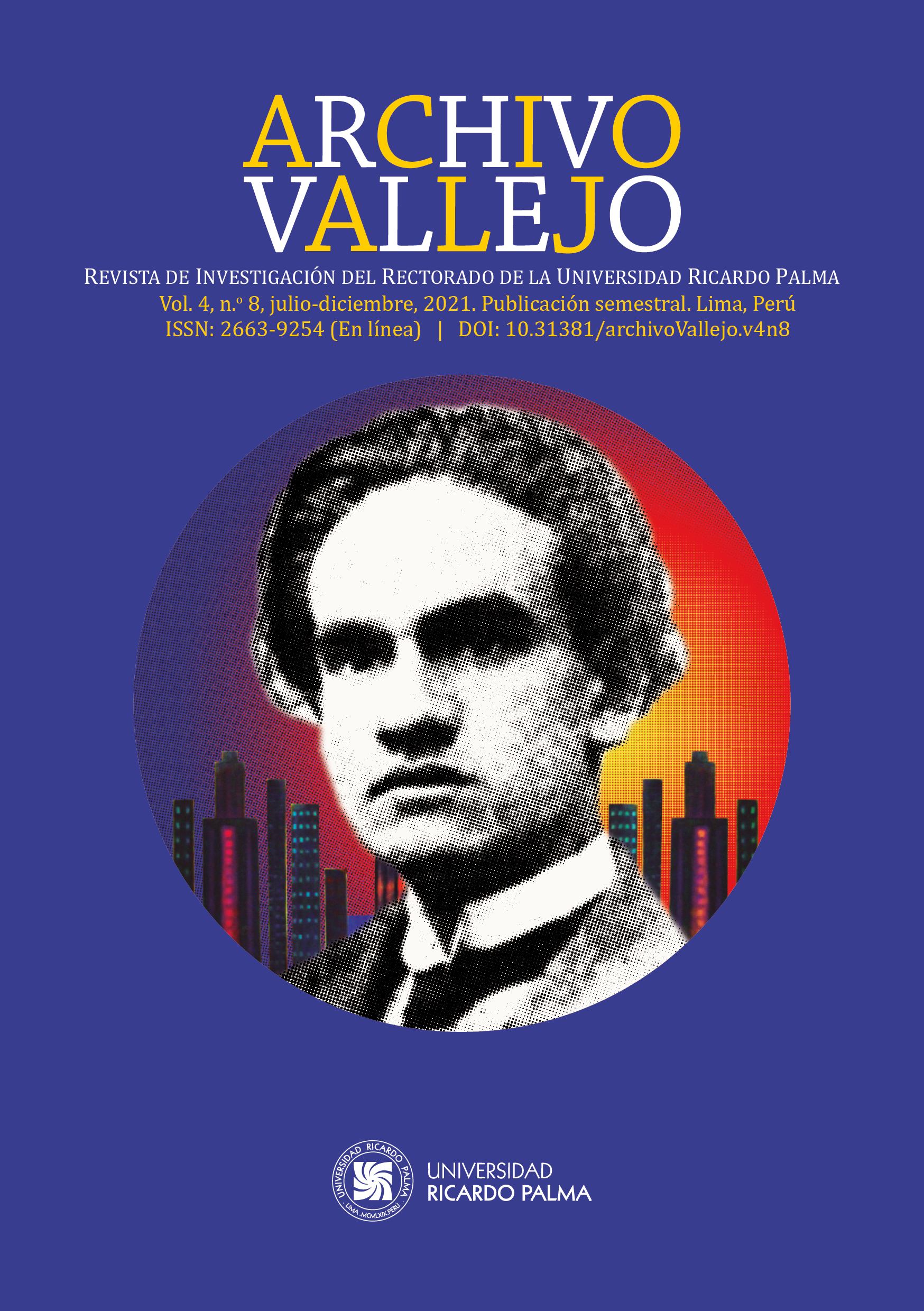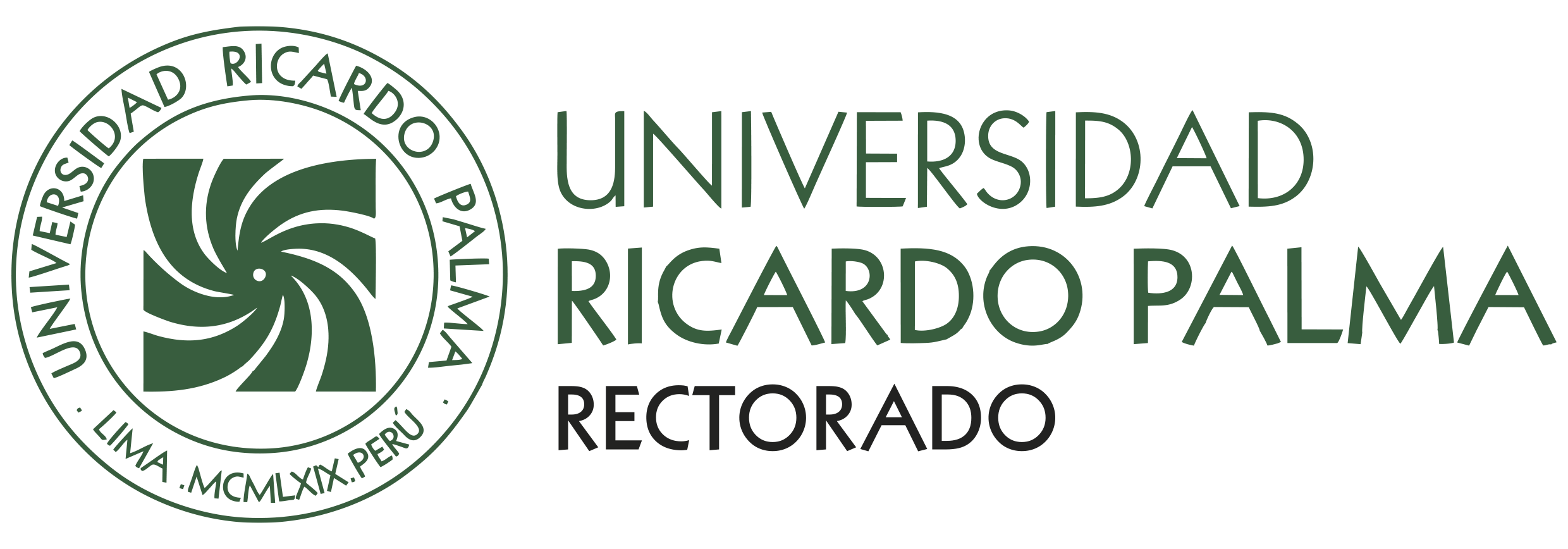Between the gothic and the pedagogical: The crisis of cholo masculinity in Fabla salvaje
DOI:
https://doi.org/10.31381/archivoVallejo.v4n8.5222Keywords:
César Vallejo, Fabla salvaje, masculinity, gothic, pedagogy, choloAbstract
This article proposes that Fabla salvaje shows the crisis of the subaltern masculinity of the cholo, embodied in the tragic trajectory of the character Balta Espinar. The crisis of the cholo Balta originates in his deficient incorporation into a new hegemonic sex/gender system and a new masculinity of a literate and urban order (represented in his friends and the narrator). On the other hand, this new sex/gender system destabilizes the traditional divisions in the Serrano world-village, which explains the gender violence that Balta exercises against his wife, the also chola Adelaida. Finally, Fabla salvaje is interpreted at the intersection of two tendencies in Vallejo's writing: the gothic tendency (which nourishes the rhetorical arsenal) and the pedagogical tendency (which explains the function of the narrator). In that sense, Balta's crisis is not ethnic/racial, but pedagogical.
References
Bendezú, E. (1992). César Vallejo. En La novela peruana. De Olavide a Bryce (pp. 135-149). Editorial Lumen.
Britton, R. K. (2015). The Poetic and Real Worlds of Cesar Vallejo: A Struggle Between Art and Politics (1892-1938). Sussex Academic Press.
Carhuaricra, M. (2020). Cultura Infantil y Los heraldos negros (1918): El itinerario pedagógico-poético de César Vallejo. Archivo Vallejo. Revista de Investigación del Centro de Estudios Vallejianos, 5(5), 15-47. https://www.revistaarchivovallejo.com/index.php/av/article/view/50/51
Clayton, M. (2013). «Animalestar»: Animal Affections in Vallejo’s Poetry. En Hart, S. (ed.), Politics, Poetics, Affect: Re-visioning César Vallejo (pp. 117-133). Cambridge Scholars Publisher.
Coronado, J. (2018). Sobre la noción de lo andino: ciencia, literatura y consumo. En Abreu, C. y Arnold, D. (eds.), Crítica de la razón andina (pp. 95-114). University of North Carolina Press.
Elmore, P. (2021). Mundo andino: ¿el planeta de los indios? La Corriente, 2(7), 38-43.
García, M. (2008). Lo inadmisible y retazos fantásticos en la narrativa vallejiana. ConNotas. Revista de Crítica y Teoría Literarias, 6(11), 199-210. https://connotas.unison.mx/index.php/critlit/article/view/173/136
García, M. (2020). Hallazgo de Cultura Infantil. Poemas iniciales didácticos de Vallejo. Espergesia. Revista Literaria y de Investigación, 7(1), 7-15. https://revistas.ucv.edu.pe/index.php/espergesia/article/view/1007/957
González Montes, A. (2014). Introducción a la narrativa de Vallejo. Academia Peruana de la Lengua, Universidad Ricardo Palma y Cátedra Vallejo.
González Vigil, R. (2012). Prólogo. En Vallejo, C., Narrativa completa (pp. 7-52). Ediciones Copé, Petroperú. https://cultura.petroperu.com.pe/biblioteca-cope/narrativa-vallejo/
Gutiérrez, M. (2004). Vallejo, narrador. Fondo Editorial del Pedagógico San Marcos.
Hart, S. (1998). Vallejo’s «Other»: Versions of Otherness in the Work of César Vallejo. The Modern Language Review, 93(3), 710-723. https://doi.org/10.2307/3736492
Hopkins, E. (2020). Fabla modernista en Fabla salvaje de César Vallejo. Lejana. Revista Crítica de Narrativa Breve, (13), 140-148. http://ojs.elte.hu/index.php/lejana/article/view/438/344
Hughes, W. (2018). Key concepts in the Gothic. Edinburgh University Press.
Mazzotti, J. A. (2021). Fabla salvaje o el «otro yo» de la peruanidad. El Jardín de los Poetas. Revista de Teoría y Crítica de Poesía Latinoamericana, (13), 189-207. https://fh.mdp.edu.ar/revistas/index.php/eljardindelospoetas/article/download/ 5777/5968
Merino, A. (2007). Estudio preliminar. En Vallejo, C., Poesía y narrativa completas (pp. 7-121). Akal.
Mudarra, A. (2019). La figuración lírica como mecanismo de representación en Fabla salvaje, de César Vallejo. Archivo Vallejo. Revista de Investigación del Centro de Estudios Vallejianos, 3(3), 83-98. https://revistaarchivovallejo.com/index.php/av/article/view/33/33
Paredes, J. y Comunidad Mujeres Creando (2013). Hilando fino. Desde el feminismo comunitario. Cooperativa el Rebozo. https://sjlatinoamerica.files.wordpress.com/2013/06/paredes-julieta-hilando-fino-desde-el-feminismo-comunitario.pdf
Segato, R. (2003). La estructura de género y el mandato de violación. En Las estructuras elementales de la violencia. Ensayos sobre género entre la antropología, el psicoanálisis y los derechos humanos (pp. 21-53). Universidad Nacional de Quilmes. https://redmovimientos.mx/wp-content/uploads/2020/04/Segato-Rita.-Las-Estructuras-elementales-de-la-violencia-comprimido.pdf
Segato, R. (2016). Colonialidad y patriarcado moderno. En La guerra contra las mujeres (pp. 109-126). Traficante de Sueños. https://traficantes.net/sites/default/files/pdfs/map45_segato_web.pdf
Sicard, A. (1994). El doble en la obra de César Vallejo. En Forgues, R. (ed.), César Vallejo. Vida y obra (pp. 191-200). Amaru Editores.
Silva-Santisteban, R. (1999). Prólogo. En Vallejo, C., Narrativa completa (pp. xiii-xxxi). Pontificia Universidad Católica del Perú, Edición del Rectorado.
Vallejo, C. (1967). Novelas y cuentos completos. Francisco Moncloa Editores.
Vallejo, C. (2014). Fosforescencia. En Obra poética (3.a ed., pp. 71-72). Peisa.
Villafán Broncano, M. (2014). Fabla salvaje, de César Vallejo: más acá del complejo edípico. En Flores, G. (ed.), Vallejo 2014. Actas del Congreso Internacional Vallejo Siempre (pp. 375-400). Cátedra Vallejo.
Villanes Cairo, C. (1988, junio-julio). El indigenismo en Vallejo. Cuadernos Hispanoamericanos. Homenaje a César Vallejo, 2(456), 751-760. http://www.cervantesvirtual.com/research/el-indigenismo-en-vallejo/dcc73490-2dc6-11e2-b417-000475f5bda5.pdf
Zavaleta, C. E. (1989). La prosa de César Vallejo. Fénix. Revista de la Biblioteca Nacional del Perú, (34-35), 169-179. http://revistafenix.bnp.gob.pe/index.php/fenix/article/view/319/1673
Zavaleta, C. E. (2007). Hacia la novela andina. Letras, 78(113), 145-156. http://revista.letras.unmsm.edu.pe/index.php/le/article/view/112/111
Downloads
Published
How to Cite
Issue
Section
License
Copyright (c) 2021 Javier Muñoz-Díaz

This work is licensed under a Creative Commons Attribution 4.0 International License.
Los contenidos publicados en la revista están bajo una licencia CC-BY 4.0, la cual permite:
- Compartir, copiar y redistribuir el material en cualquier medio o formato.
- Adaptar, remezclar, transformar y construir a partir del material para cualquier propósito, incluso comercialmente.
Bajo los siguientes términos:
- Atribución. Usted debe dar crédito de manera adecuada, brindar un enlace a la licencia, e indicar si se han realizado cambios. Puede hacerlo en cualquier forma razonable, pero no de forma tal que sugiera que usted o su uso tienen el apoyo de la licenciante.















